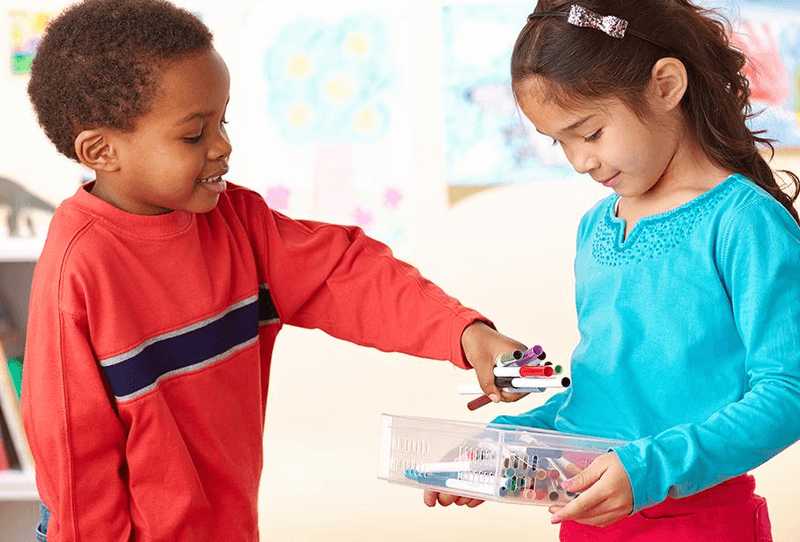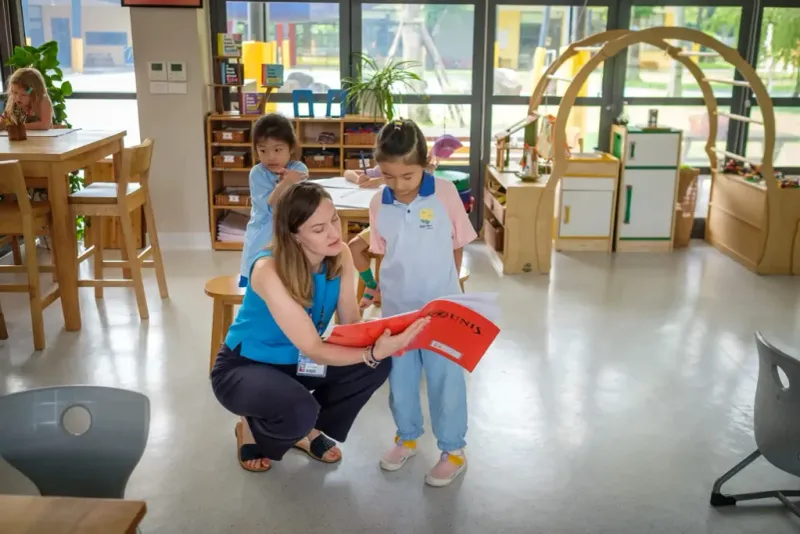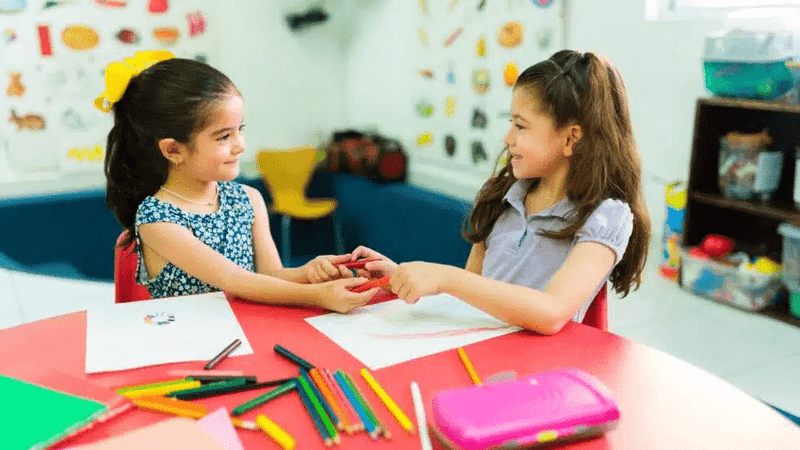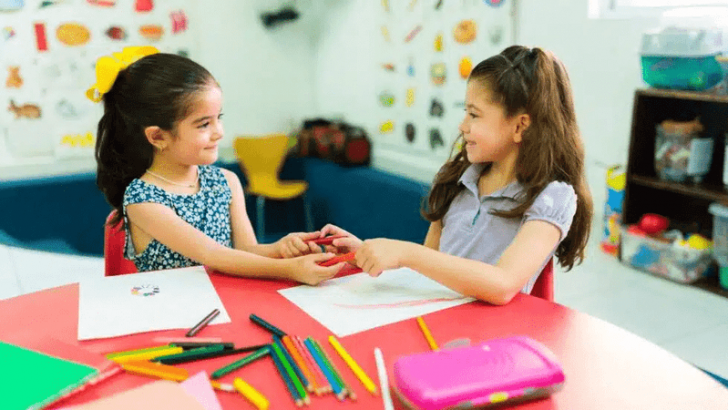Teachers often have a unique insight into the lives of their students. Through subtle cues, they can often tell which kids come from nurturing and supportive environments. This blog post explores 15 tell-tale signs that a child was raised in a loving home, providing a glimpse into the characteristics and behaviors that stand out in a classroom setting.
1. Confident Social Interactions

A child who has been nurtured in a loving home often displays confidence when interacting with peers and adults. This confidence is not arrogance but a grounded self-assuredness. It’s evident when they approach group activities or express their opinions without fear.
Teachers notice these children readily participate in class discussions, often leading with curiosity and enthusiasm. This behavior stems from an environment where their thoughts and feelings are valued.
The ability to communicate effectively with others is a skill honed at home, where dialogue and expression are encouraged, fostering a sense of belonging and security.
2. Empathy Towards Others

Children from loving homes often exhibit a strong sense of empathy. This ability to understand and share the feelings of others is a clear indicator of emotional intelligence. Teachers witness moments when these children offer comfort to peers in distress.
Such empathy is cultivated in environments where kindness and understanding are regularly practiced. Parents who model compassionate behavior instill these values in their children, teaching them to be considerate and caring.
An empathetic child in the classroom is often seen as a friend and ally, someone peers can rely on for support and understanding in times of need.
3. Respectful Behavior

Respectful behavior is a hallmark of a child raised in a loving home. Teachers notice children who consistently use ‘please’ and ‘thank you’ and treat others with kindness and consideration.
Such manners are not just about politeness; they reflect a deeper understanding of interpersonal respect. These children are often seen helping others, listening attentively, and following classroom rules.
The foundation of respect is built at home, where mutual respect between family members sets a standard for how the child interacts with the world. This respectful demeanor is appreciated and admired in any educational setting.
4. Eagerness to Learn

An eagerness to learn is often seen in children from supportive families. Teachers observe these students showing genuine interest in lessons, driven by curiosity and a desire to explore new ideas.
This enthusiasm for learning is fostered in homes where education is valued and encouraged. Parents who engage in discussions and provide resources for exploration help develop this trait.
Such children often take the initiative in their own learning, seeking out books, projects, and activities that expand their knowledge. This love for learning is infectious, inspiring peers and enriching the classroom environment.
5. Healthy Boundaries

Children from loving homes understand and respect personal boundaries. Teachers note how these students assertively communicate their limits, whether in social interactions or academic settings.
This understanding of boundaries is nurtured in environments where children are taught to respect themselves and others. Parents who model healthy boundary-setting inspire their children to do the same.
Such children are often seen managing conflicts effectively, choosing to walk away from situations that compromise their well-being. This ability to establish and maintain boundaries is crucial for developing healthy relationships throughout life.
6. Optimistic Outlook

An optimistic outlook is a common trait among children raised in loving homes. These children approach life with positivity, often seen smiling and enthusiastic about school activities.
Teachers appreciate this optimism, as it contributes to a positive classroom atmosphere. It is cultivated in homes where challenges are met with encouragement and solutions rather than criticism.
Children with an optimistic view are often resilient, able to handle setbacks with grace and hope. This attitude is infectious, spreading positivity and encouragement to peers and educators alike.
7. Strong Sense of Responsibility

A strong sense of responsibility is evident in children raised with care and guidance. These students often take initiative in classroom tasks, demonstrating maturity beyond their years.
Teachers notice how these children are dependable, often volunteering to help and follow through on commitments. This sense of duty is instilled at home, where responsibilities are shared and valued.
Such students are often role models for their peers, showing that responsibility is not a burden but an opportunity to contribute positively. This trait prepares them for future success, both academically and personally.
8. Ability to Express Emotions

Children from nurturing environments are often comfortable expressing their emotions. Teachers see these students openly discussing feelings, whether it’s joy, frustration, or sadness.
This ability to articulate emotions is developed at home, where open communication is encouraged. Parents who validate their children’s feelings help them understand and manage emotions effectively.
Such emotional intelligence is vital in a school setting, allowing children to navigate social dynamics and academic challenges with resilience. It also fosters a classroom culture of understanding and empathy, benefiting everyone involved.
9. Creative Problem Solving

Creative problem solving is a skill often seen in children from supportive backgrounds. These students approach challenges with innovative thinking and resourcefulness.
Teachers observe how these children contribute original ideas during projects and discussions. This creativity is nurtured in environments where exploration and experimentation are encouraged.
Parents play a crucial role by providing opportunities for creative expression, whether through art, science, or play. Such children grow up understanding that there are multiple ways to solve a problem, a valuable lesson for both academic and personal growth.
10. Appreciation for Diversity

An appreciation for diversity is often evident in children raised in loving homes. These students are open-minded and respectful towards different cultures and perspectives.
Teachers notice these children participating in discussions about diversity with genuine interest and understanding. This respect is fostered in homes where diversity is celebrated and differences are embraced.
Such children are often seen as bridges between diverse groups, promoting inclusivity and harmony. Their appreciation for diversity enriches the classroom environment, preparing them for a globalized world where empathy and understanding are key.
11. Independent Thinking

Independent thinking is a trait nurtured in loving environments where children’s opinions are valued. Teachers notice students who confidently present unique ideas, unafraid to stand out.
This ability to think independently is cultivated at home, where curiosity and questioning are encouraged. Parents who listen and engage with their children’s thoughts foster this independence.
Such students are often leaders among their peers, inspiring others to think critically and creatively. This trait is invaluable in both academic settings and the broader world, where innovation and leadership are highly prized.
12. Resilience in Challenges

Resilience is a hallmark of children from supportive homes. Teachers observe these students tackling challenges with determination and grit, undeterred by setbacks.
This resilience is built in environments where effort is praised over outcome, and failure is seen as a learning opportunity. Parents who encourage perseverance help their children develop this important trait.
Such students are often seen as determined and resourceful, qualities that inspire peers and contribute to a positive learning environment. Resilience not only benefits academic pursuits but also prepares children for life’s inevitable ups and downs.
13. Generosity and Sharing

Generosity is often observed in children from loving homes. Teachers notice these students readily sharing supplies and offering help to classmates in need.
This willingness to give is cultivated in homes where sharing and kindness are everyday practices. Parents who model generosity teach their children the joy of giving and helping others.
Such children are often seen as thoughtful and caring, creating a classroom atmosphere of cooperation and support. Generosity is a valuable trait that fosters community and builds strong interpersonal relationships, both in school and beyond.
14. Joyful Participation

Joyful participation is a trait of children who feel secure and loved. These students engage in school activities with enthusiasm and joy, whether it’s a play, concert, or sports event.
Teachers appreciate this lively spirit, as it enhances group activities and brings vibrancy to the classroom. This tendency towards joy is nurtured in homes where children are encouraged to explore and express themselves.
Such children often inspire their peers to join in and enjoy the moment. Their joy and enthusiasm are infectious, spreading positivity and enhancing the overall school experience for everyone involved.
15. Teamwork Skills

Teamwork skills are often developed in children raised with love and encouragement. Teachers see these students working well with peers, displaying cooperation and mutual respect.
These skills are nurtured at home, where family activities require collaboration and communication. Parents who model teamwork instill the importance of working together towards common goals.
Such children are often leaders in group settings, mediating conflicts and ensuring everyone contributes. Their ability to work well with others is a valuable asset in any educational environment, promoting a sense of community and shared achievement.
Hi all, I am Sidney, an accountant, a hobbyist photographer, and a mother to two sweet girls who are my motivation. I love sharing the tips and tricks I gained all these years I’ve been a mother. I hope it will help you!

